#Calderón de la Barca
Text
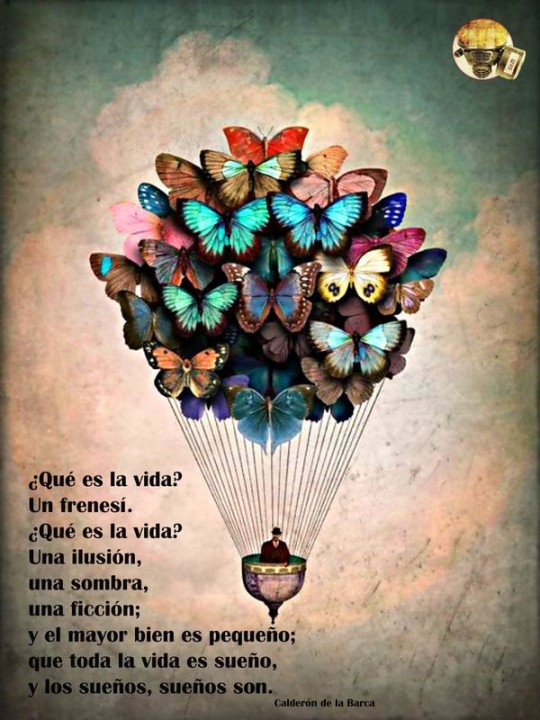
What is life? / A frenzy.
What is life? / An illusion,
a shadow, / a fiction;
and the greatest good is small;
that all the life is a dream,
and dreams, dreams are.
Calderón de la Barca.
Fuente: Pinterest.com
46 notes
·
View notes
Text

«La vida y el sueño son hojas de uno y el mismo libro. La lectura conexa es la vida real. Pero cuando las horas de lectura (el día) han llegado a su fin y comienza el tiempo de descanso, con frecuencia hojeamos ociosos y abrimos una página aquí o allá, sin orden ni concierto: a veces es una hoja ya leída, otras veces una aún desconocida, pero siempre del mismo libro. Y así, una hoja leída aisladamente carece de conexión con la lectura coherente: pero no por ello es muy inferior a esta, si tenemos en cuenta que también la totalidad de la lectura coherente arranca y termina de forma improvisada y no hay que considerarla más que como una hoja aislada de mayor tamaño.»
Arthur Schopenhauer: El mundo como voluntad y representación I. Editorial Trotta, pág. 66. Madrid, 2009.
TGO
@bocadosdefilosofia
@dies-irae-1
#schopenhauer#arthur schopenhauer#sueño#vigilia#realidad#voluntad#representación#coherencia#fenomenismo#el mundo como voluntad y representación#ludwig ruhl#la vida es sueño#calderón de la barca#teo gómez otero
7 notes
·
View notes
Text
Publicado el volumen 31 de la serie «Comedias completas de Calderón de la Barca»: «Las armas de la hermosura», edición crítica de Paula Casariego Castiñeira
Acaba de publicarse el volumen 31 de la serie «Comedias completas de Calderón de la Barca» (número 166 de la colección «Biblioteca Áurea Hispánica»), Las armas de la hermosura, en edición crítica de Paula Casariego Castiñeira.
Pedro Calderón de la Barca, Las armas de la hermosura, edición crítica de Paula Casariego Castiñeira, Madrid / Frankfurt am Main, Iberoamericana / Vervuert, 2024. ISBN…

View On WordPress
#Biblioteca Áurea Hispánica#Calderón de la Barca#Comedias completas de Calderón de la Barca#Coriolano#Edición crítica#Iberoamericana Vervuert#Las armas de la hermosura#Paula Casariego Castiñeira#Siglo de Oro#Teatro del Siglo de Oro
0 notes
Text
Libro “La vida es sueño-Pedro Calderón de la Barca”
Una de las grandes obras de la literatura española
Título: La vida es sueñoAutor: Pedro Calderón de la BarcaGénero: TeatroMovimiento literario: BarrocoEspecie: TragediaÉpoca: Siglo XVIILugar de publicación: Madrid, EspañaFecha de publicación: 1635Estructura: Consta de tres jornadas o actos.
Argumento:El rey Basilio, temiendo que su hijo Segismundo, de nacimiento violento, traiga la desdicha a…
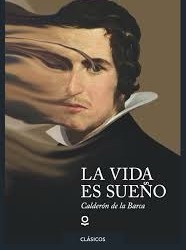
View On WordPress
0 notes
Text
La ficción como oasis de lo real.
La ficción es algo cotidiano, contingencias que suceden sin trascendencia. Bien pensado, los afortunados son los que transitan por esas secuencias sustituibles, y excepcionalmente acontece algo real en sus vidas que los espolea dejando una huella indeleble. Esta incitación acostumbra a presentar diversos matices, aunque en síntesis podríamos calificarlos de positivos, neutros y negativos.
La…

View On WordPress
0 notes
Text
Nuevas comparaciones
Si los diarios son periódicos, los anuarios, ¿qué son?Los miembros del Congreso comen pechuga de pollo y los de la Corte SupremaFernando se quedó en la conferencia de motu proprio pero Rafael ObligadoSi una monja come jamón y un japonés usa una esponja, ¿qué le pasa a Lorca en verano?Cuando llueve en Buenos Aires las calles se llenan de Charcas y PozosEn el puerto, bajaron al mismo tiempo…
View On WordPress
#Abasto#Buenos Aires#Calderón de la Barca#Charcas#Colgate#Comodoro Py#Congreso#Corte Suprema#Del Barco Centenera#Eustaquio Frías#Guardia Vieja#Iberá#Lafuente#Lorca#Messi#Pozos#Rafael Obligado
0 notes
Text
Los Tercios por Pedro Calderón de la Barca
Los Tercios por Pedro Calderón de la Barca
Esa ética del honor y del deber, del sacrificio y de la fidelidad, del compromiso, que fue realmente la base de la fuerza de los tercios. De nuestros tercios.
Si los tercios entraron en la leyenda no fue solo por sus victorias militares, sino por un cierto estilo ético que define a todo un país y una época. Quien mejor definió ese estilo ético fue probablemente Calderón de la Barca, soldado, en…

View On WordPress
1 note
·
View note
Text
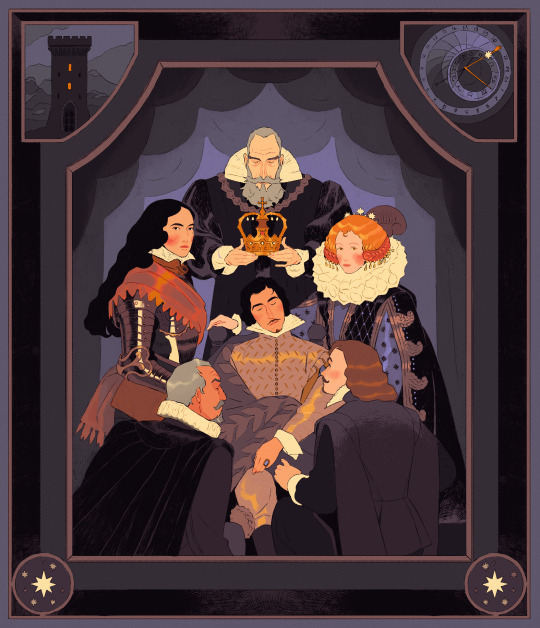
A King dreams that he is King, and within that illusion lives commanding
#La Vida es Sueño#La Vie est un Songe#pedro calderón de la barca#17th century#siglo 17#baroque theatre#teatro español
2K notes
·
View notes
Text
The Count de Saint Germain as Paracelsus (or His Corrupted Foil), and King Basilio
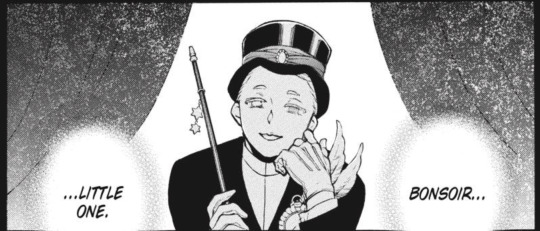
There's a theory floating around that I've mentioned before, and that I did not come up with but can't remember who did, about The Shapeless One being (literally or figuratively) a corrupted Paracelsus. Well, his outfit always reminded me of something, and I just realized it's a magician's outfit complete with a wand (that has stars at the end).
Again, the direct reference is the weird eccentric alchemist, musician, magician, obscurantist and probable conman the Count de Saint Germain, but the possibility of a secondary reference is interesting. At the very least, it might be playing as a foil to the creator of Babel.
The idea of him as a magician is also kind of cool when you take into account the Marquis Machina's speech to Ruthven after the Gevaudan Arc. She/he/they also recalls magic, and possibly shows how alike they are.

I also mentioned this over two years ago when I first watched the anime, but the fact that The Shapeless One wears a broken watch indicates (to me) that he's a creature out of time itself. Could simply be that he's the oldest vampire in history, except maybe for the Faustina or Luna themselves, or that he's something more than just vampire. Like Paracelsus himself.
(or a corrupted analogue to him.)
Is there a third (?!) reference to King Basilio in Life is a Dream?
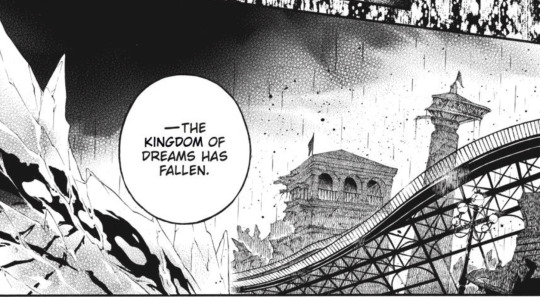
And finally, almost forgot this, but I've always said that his speech about "dreams are only dreams, inevitably there will come a time when you have to wake up and face reality" from chapter 55 sounds suspiciously like Pedro Calderón de la Barca's well known "Life is a Dream" play with its famous verse:
What is life? 'Tis but a madness.
What is life? A thing that seems,
A mirage that falsely gleams,
Phantom joy, delusive rest,
Since is life a dream at best,
And even dreams themselves are dreams
I don't really want to get into the full possibilities of that reference, particularly with the idea of free will vs predestination that also smoulders in the back of Vanitas no Carte's storyline. I think that deserves it's own essay (and a personal reread of the play).
But lets talk about it superficially. The play's summary goes like this: The protagonist Segismundo's father King Basilio is obsessed with science and astrology. The stars predict his son will be a tyrant, so he locks him in a tower and runs a kind of natural experiment to see if he will turn the tyrant that the stars predict when he's set free. Or if he can exercise free will and become a good king. If he's a tyrant, he locks him back up and convinces him the whole thing was a dream. There's also crossdressing. It's a fun read.
Anyways, it reminds me of The Shapeless One's experiments on Louis. He locked him up in a castle at a mythical region of France, Averoigne, to see if he would become a curse-bearer, as was his (supposedly) destiny due to being born as a twin. Or if he had the free will to break free. Obviously Louis, unlike Segismundo, lost and died. (Or maybe he's locked somewhere else, I know there's some Louis de Sade is Alive Truthers out there!). I could talk about his machinations on Mikhail and Noé as well, but this is long enough.
Astolfo also appears as a character in the play, but Calderón de la Barca lifts him from the same source material Mochijun does in La Chanson de Roland. Not sure if dear Pedro gets it directly from that epic poem or one of its derivative works though, and I'm not curious enough on that to research it.
So I can't draw a direct reference, but it would be strange that someone as well-read on classic European lit like Mochijun wouldn't know of Pedro Calderón de la Barca, probably the most famous Spanish Golden Age writer, and his version of Astolfo.
#i wonder if the whole dreams are only dreams speech is as familiar to english-speakers as spanish-speakers#spanish is a fun language sometimes because a lot of turns of phrases are linked to old Spanish Golden Age works#some of it from Lope de Vega or Calderón de la Barca. Thats what my scholarly friend says anyways#the case study of vanitas#vanitas no carte#the shapeless one#the count de saint germain#vnc#vnc meta#vnc references
21 notes
·
View notes
Text
did i ever told you years ago i started making a persona game based in madrid. idk if i'll ever continue but here's the crappy maps i made for it <3

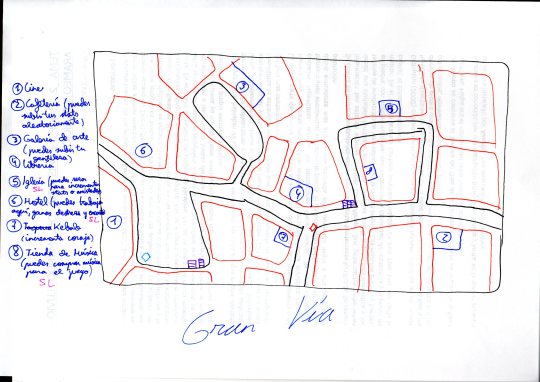

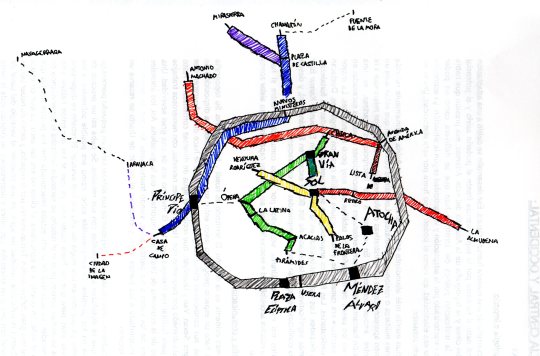
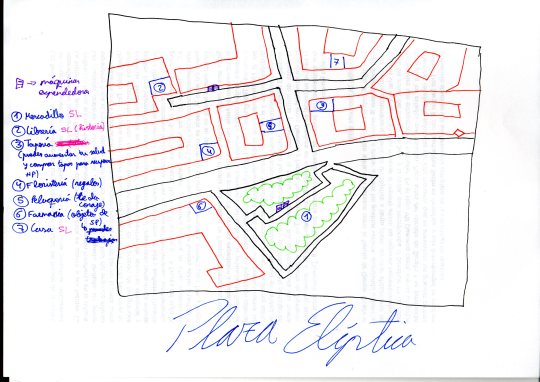


#persona#also the high school is called calderón de la barca not miguel delibes#it fits more thematically just trust me
12 notes
·
View notes
Text

Camus: "I have never felt more full of strength and life. The enormous joy that fills me would raise the world..."
Casarès: " All my life will fall short to love you...'
~~~♡♥︎~~~
"If Albert was a Don Juan, Maria was a Don Juana." ~ Oliver Todd
"Love that is not madness is not love." ~ Pedro Calderón de la Barca
Duo CamCasa: Costume Rehearsal at the Angers Festival; Play "Devotion to the Cross" by Pedro Calderón de la Barca; dramaturgy and direction: AlbertCamus; photographer: Emile Muller, 1953
#albert camus#correspondance#maria casares#love letters#lovers#literature#theatre#pedro calderón de la barca#devotion to the cross 1953#oliver todd#camus biography
16 notes
·
View notes
Text
“What is this life? A frenzy, an illusion,
A shadow, a delirium, a fiction.
The greatest good's but little, and this life
Is but a dream, and dreams are only dreams.”
― Pedro Calderón de la Barca, La vida es sueño
25 notes
·
View notes
Text
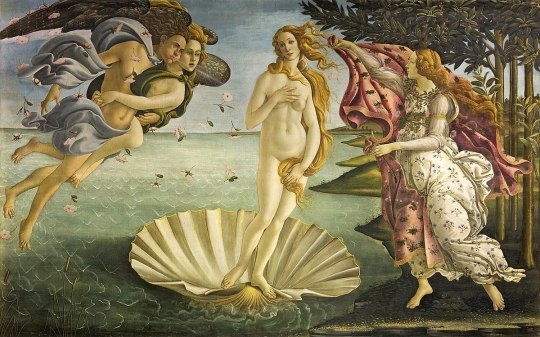
«Hay en el Renacimiento una afirmación de la libertad del individuo y una negación de la misma con la consolidación de las monarquías absolutas y con el surgimiento del Estado centralizado; una afirmación de la libertad con la ruptura de la pirámide feudal y una negación de la misma con la desaparición de las comunas medievales; una afirmación de la libertad con el desarrollo del espíritu crítico y una negación de la misma con el surgimiento del capitalismo mercantil, de la usura, de las lealtades nacionales. La libertad es representada y vivida como libertad frente al destino (Calderón), frente al poder político y militar (Lope) y frente a la presciencia divina (Tirso de Molina) o como creación de valor y pugna por el ideal (Cervantes). Es pensada como libertad individual (Rabelais), como libertad volitiva o libre albedrío (Erasmo), como libertad política o crítica de los fundamentos del Estado (Etienne de la Boetie), como libertad religiosa (Servet) y como libertad filosófica (Bruno).»
Ángel J. Cappelletti: La idea de libertad en el Renacimiento. Editorial Laia, pág. 7. Barcelona, 1986.
TGO
@bocadosdefilosofia
@dias-de-la-ira-1
#ángel j. cappelletti#renacimiento#individuo#libertad individual#negación de la libertad#estado centralizado#monarquía absoluta#afirmación de la libertad#espíritu crítico#capitalismo#capitalismo mercantil#usura#lealtad nacional#calderón de la barca#poder político#poder militar#lope de vega#presciencia divina#tirso de molina#ideal#cervantes#rabelais#libertad volitva#libre albedrío#erasmo de róterdam#libertad religiosa#destino#libertad#teo gómez otero#el nacimiento de venus
1 note
·
View note
Text
Publicado el libro «Géneros y construcción literaria en el Siglo de Oro», de Santiago Fernández Mosquera («Biblioteca Áurea Hispánica», 162)
Se ha publicado recientemente el número 162 de la colección «Biblioteca Áurea Hispánica», el libro Géneros y construcción literaria en el Siglo de Oro, de Santiago Fernández Mosquera.
Santiago Fernández Mosquera, Géneros y construcción literaria en el Siglo de Oro, Madrid / Frankfurt am Main, Iberoamericana / Vervuert, 2023, ISBN 978-84-9192-408-1.
La reflexión sobre el género literario ha sido…

View On WordPress
#Biblioteca Áurea Hispánica#Calderón de la Barca#Cervantes#Género literario#Géneros#Iberoamericana Vervuert#Literatura del Siglo de Oro#Quevedo#Santiago Fernández Mosquera
0 notes
Text
Love, Love
What is the glory far above
All else in human life?
Love! Love!
There is no form in which the fire
Of love its traces has impressed not.
Man lives far more in love's desire
Than by life's breath, soon possessed not.
If all that lives must love or lie,
All shapes on earth, or sea, or sky,
With one consent, to Heaven cry
That the glory far above
All else in life is--
Love! O, Love!
Thou melancholy thought, which art
So fluttering and so sweet, to thee
When did I give the liberty
Thus to afflict my heart?
What is the cause of this new power
Which doth my fevered being move,
Momently raging more and more?
What subtle pain is kindled now,
Which from my heart doth overflow
Into my senses?
Pedro Calderón De La Barca
2 notes
·
View notes
Photo
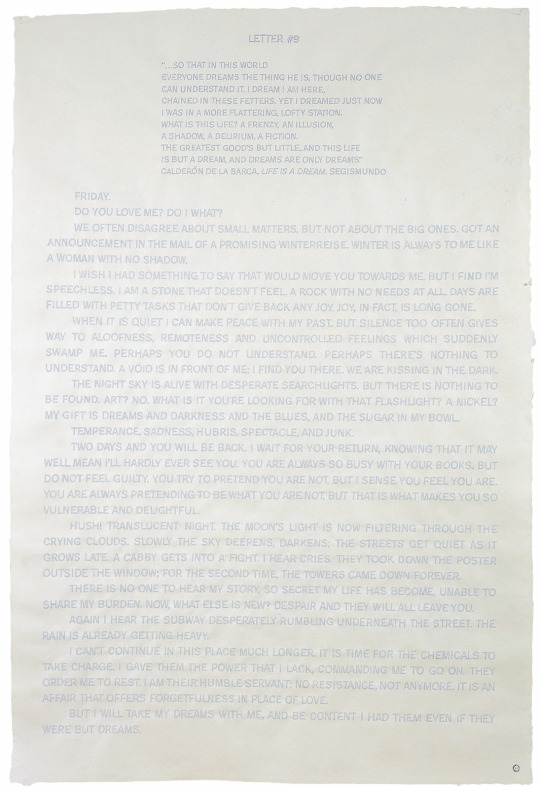
Elena del Rivero, Letter #9, [from Nine Broken letters], (calligraphy on handmade abaca paper), Text by Elena del Rivero, Design by Kiki Bauer, Calligraphy by Karen Gorst, 2004 [© author(s)/artist(s). © Photo: © Cathy Carver]
#art#visual writing#calligraphy#elena del rivero#kiki bauer#karen gorst#cathy carver#pedro calderón de la barca#1630s#2000s
21 notes
·
View notes